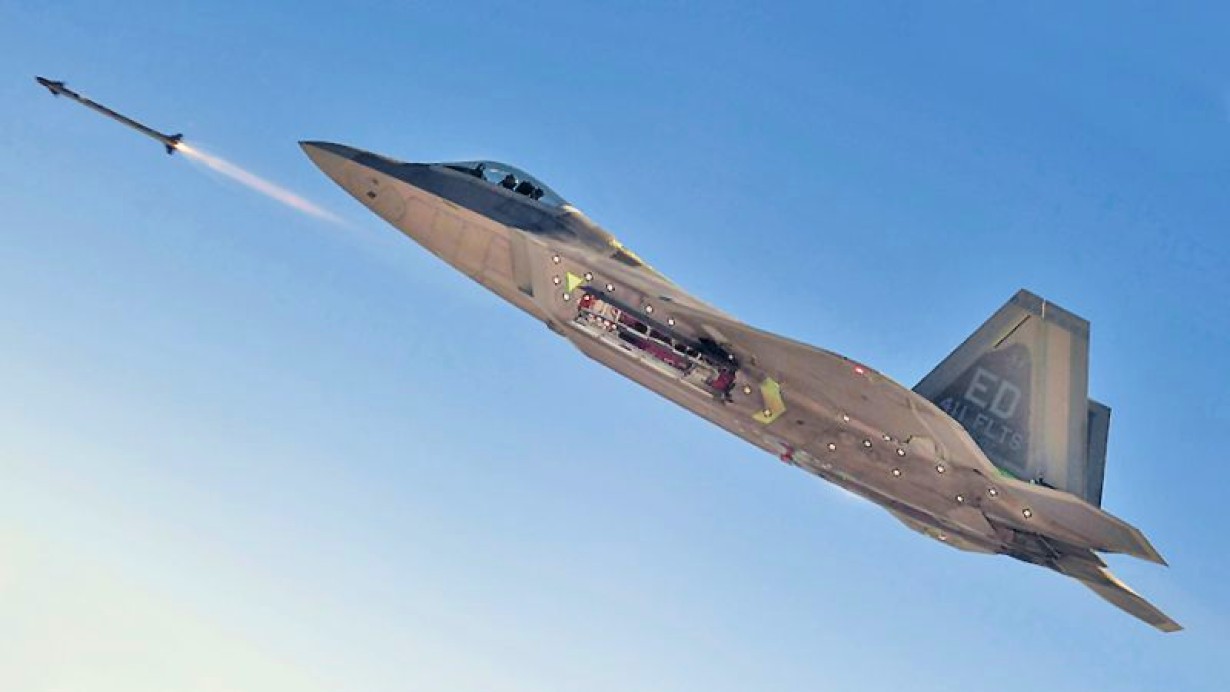On August 29, the United States announced its plans to provide AIM-9M Sidewinder heat-seeking air-to-air missiles to Ukraine as part of a new aid package.
The US State Department said the latest military aid package is valued at $250 million. It includes AIM-9M air defense missiles, equipment for mine-clearing, Javelin anti-armor systems, additional anti-armor systems, and rockets.
In addition to these components, the aid package extends to munitions for High Mobility Artillery Rocket Systems. Moreover, it reinforces Ukraine’s cannon artillery capabilities by supplying 155mm and 105mm artillery ammunition.
“Russia started this war and could end it any time by withdrawing its forces from Ukraine and stopping its brutal attacks. Until it does, the United States and our allies and partners will stand united with Ukraine for as long as it takes,” the United States Department of State added.
However, this isn’t the first instance of Sidewinder’s donation to Ukraine. In May, Ukraine announced that the Canadian Armed Forces would donate 43 AIM-9 missiles, likely AIM-9Ms, to Kyiv’s forces. This donation was aimed at boosting Ukraine’s defensive capabilities.

The situation regarding the arrival of the Canadian Sidewinders in Ukraine remains uncertain, and there is also a lack of clarity regarding the timeline for the delivery of the American Sidewinders.
The AIM-9M missile is an enhanced version of the AIM-9L variant. Retaining the all-aspect capability of the AIM-9L, the AIM-9M elevates its overall performance.
Notable improvements include bolstered defenses against infrared countermeasures, superior background discrimination capabilities, and a rocket motor emitting reduced smoke.
These enhancements collectively augment the missile’s proficiency in target acquisition and locking, simultaneously diminishing its susceptibility to detection.
These missiles demonstrate compatibility with a wide array of modern fighter jets. Notably, the AIM-9M experienced widespread deployment during the recent Gulf War. Despite its extensive use, the number of successful kills remained relatively limited.
The AIM-9M is the primary dogfight missile for leading Western air forces. However, most successful kills were attributed to the Sparrow missiles during the Gulf War.
This outcome can be attributed to the Iraqi Air Force’s reluctance to participate in dogfight scenarios, which favored the utilization of Sparrow missiles with extended engagement ranges.
AIM-9M Sidewinder vs. Russian Drones
According to the experts, the availability of these missiles is anticipated to play a critical role in countering Russian drones. In the face of intense Russian drone attacks, Ukraine is grappling with a pressing challenge. It is rapidly depleting its existing stock of aging Soviet-era R-73 heat-seeking missiles.
Ukrainian MiG-29s and Sukhoi Su-27s are tasked with carrying and launching these missiles. While these aircraft armed with R-73s provide a reasonable defense against slower-moving Shahed drones, the effectiveness is somewhat limited.
The Ukrainian Air Force’s engineers and technicians, aided by support from Western nations, have effectively showcased their ability to integrate Western missiles into their fleet of Soviet-era fighter jets.
Therefore, the feasibility of equipping Ukrainian fighter jets with AIM-9M missiles is quite possible, given the demonstrated expertise in cross-platform integration and modification efforts.
In the meantime, Ukraine is eagerly anticipating the delivery of F-16 fighter jets from its allied nations. The plan entails the acquisition of approximately 60 or more Lockheed Martin F-16s from Denmark, The Netherlands, and Norway.
The AIM-9M missiles could also be launched from F-16s when they arrive in Ukraine. This combination of advanced missiles with F-16 fighter jets promises to significantly enhance their effectiveness against Russian targets.
However, uncertainty shrouds the timeline for the arrival of these advanced jets in Ukraine. It is understood that the final decision regarding the timeframe for providing the fighter jets depends on completing the pilot training program.
Ukraine has remained resolute that introducing these aircraft would have a notable impact.
Conversely, American officials have consistently stressed the importance of tanks, ammunition, and highly skilled ground troops in the current predominantly ground-based conflict.
The acquisition and operation of Western fighters entail considerable expenses, and training and deploying an adequate number of pilots to ensure effective air coverage could span several years.
Additionally, the anticipated timeframe for training Ukrainian pilots on more advanced aircraft than they are accustomed to is estimated to extend over a minimum of four months. This underlines the complex nature of transitioning to these sophisticated platforms and the associated training commitments.
- Contact the author at ashishmichel(at)gmail.com
- Follow EurAsian Times on Google News